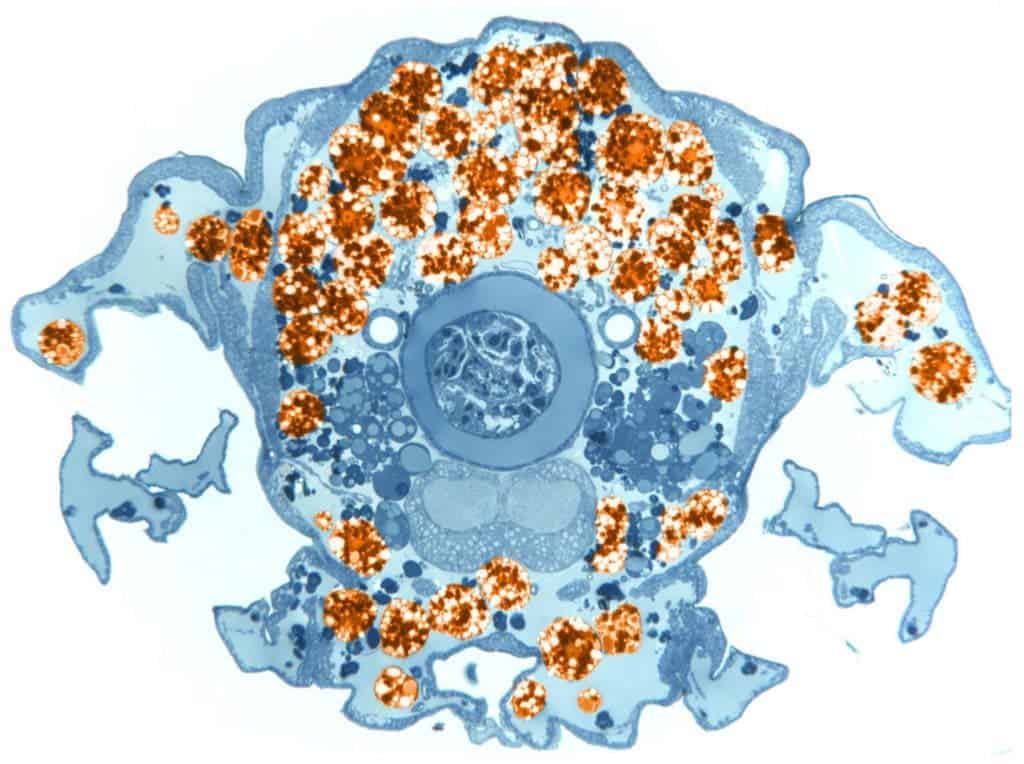Fat cells in fruit flies (Drosophila) play a surprisingly important role in healing wounds and preventing infection. According to researchers at the University of Bristol, fat cells propel themselves forward towards the wound, brushing aside debris to be consumed by immune cells. Previously, fat cells were thought to be exclusively immobile, but these new findings suggest otherwise.

First author Anna Franz was filming fly immune cells (hemocytes) when her attention was turned to large shadows moving across the frame. What objects could have cast such a giant shadow? Franz thought of fat cells “but of course, they shouldn’t be moving, because fat cells aren’t motile,” the scientist recalled. They really were motile, however.
“We had to be sure that they weren’t just drifting and then sort of sticking at the wound site,” said Paul Martin, professor of cell biology and senior author of the new paper, in a statement. “And we had to rule out that they weren’t just being sort of sucked to the wound by fluid coming out of the hole, much like if you tossed a flannel in a bath and then took the plug out.”
This movie illustrates how necrotic cells (bright red nuclei), are swept to the wound periphery by the incoming FBC (green). Elapsed time is in the top right corner in h:min:sec. Scale bars=20μm.Credit: Franz et al./Developmental Cell.
Fruit fly fat cells are large enough that anywhere from one to four cells are enough to plug the wound. Once at the wound, the cells keep bacteria out of the site of injury while it heals. The fat cells stay there until the wound is healed, after which they detach and swim off. “And that’s what this looks like as it moves,” said Martin, referring to fat cells’ mode of migration in fruit flies. Genetically modified versions of fat body cells which deactivated actin and myosin, the proteins that constrict at the center of the fat cell, no longer moved to wounds. This suggests that the fat cells were actively migrating, rather than being carried along the way by hemolymph — the fluid equivalent to blood in flies.
“One important scientific lesson is “keep your eyes and mind open when doing experiments”; Anna wasn’t initially investigating fat cells; rather she was watching inflammatory cells as they move to a wound and just happened across the fat cells “swimming” to the wound too, and she was smart enough to realise that this was an even more interesting observation, because fat cells were not supposed to be motile,” Martin told ZME Science.
This sort of movement likely isn’t restricted to fat cells. The authors have shown that fat cells in vivo can move without adhering, and perhaps this is the case for other types of cells.

The researchers now want to learn how exactly the fat cells get instructed to the move to the wound. Even when there were no immune cells, fat cells still migrated to the wound where they collaborate with immune cells. Finding the chemical signals that guide the movement of the fat cells could prove extremely important. For instance, if fat cells prove to be motile in mammals as well, then these could be instructed to move around the body for therapeutic purposes.
“We are also fascinated by how fat cells might be utilised to enhance wound healing in patients, and how they might work together with inflammatory cells as a team,” Martin told ZME Science.
No one has shown yet that fat cells can migrate in vertebrates. “But perhaps they do,” he adds. “Now, because of this research, it would be worth looking at them. It’s not crazy to think that they might travel to a wound and do important things when they get there.”
Scientific reference: Developmental Cell, Franz et al.: “Fat body cells are motile and actively migrate to wounds to drive repair and prevent infection.”


